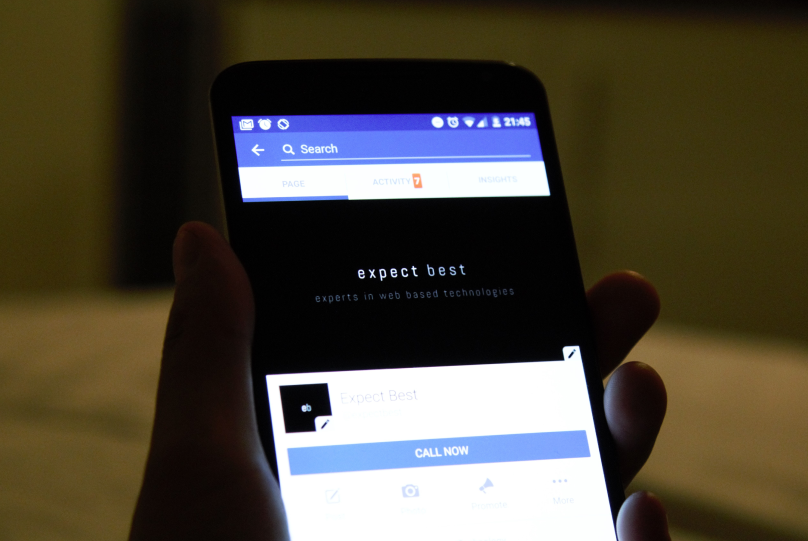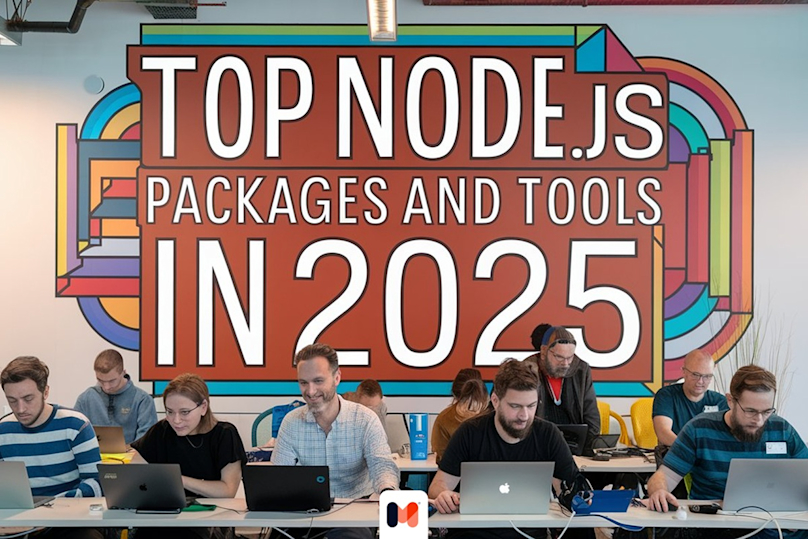Introduction
In the dynamic and ever-evolving world of technology, staying ahead of the curve is crucial for businesses striving to deliver exceptional user experiences. One groundbreaking concept that has emerged in recent years is that of Progressive Web Apps (PWAs). These innovative and progressive applications represent a convergence of the best features from both web and mobile applications, forming a symbiotic blend that offers users a seamless, lightning-fast, and profoundly engaging experience across a diverse array of devices.
The allure of building a progressive web app lies in its remarkable ability to bridge the gap between traditional websites and native mobile apps, effectively dismantling the barriers that have long separated these two realms. This paradigm shift has brought about a revolution in the way we interact with the digital landscape, effectively transforming the user experience into an unprecedented amalgamation of convenience, speed, and interactivity.
In this comprehensive article, we embark on an exploration of the intricate universe of Progressive Web Apps. Our journey will encompass a thorough examination of multifaceted progressive web app features, the array of benefits they bestow upon both developers and end-users, and the transformative ways in which they are reshaping the very foundations of web development. Whether you're a curious user eager to fathom the intricacies of this technological leap or a seasoned tech enthusiast seeking to expand your horizons, we invite you to accompany us. Together, we shall delve into the heart of Progressive Web Application, unraveling their essence and illuminating the profound impact they wield upon our digital terrain. Let's embark on this enlightening expedition, unraveling the layers of innovation that define the realm of PWAs, its features, and uncovering the profound transformation they orchestrate within our digital interactions.
History of Progressive Web Applications
To understand the evolution and significance of Progressive Web Apps (PWAs), it's essential to delve into their intriguing history and origin of PWA. The inception of PWAs can be traced back to a confluence of technological advancements and changing user expectations.
The concept took its initial steps in 2015 when designer Frances Berriman and Google Chrome engineer Alex Russell introduced the term "Progressive Web Apps." The vision behind PWAs was to bridge the gap between traditional web and browser experiences and native mobile applications, offering a solution to the limitations of both platforms.
In 2016, Google Chrome pioneered the Progressive Web Apps movement by integrating support for JavaScript service workers, a critical component that allowed PWAs to function offline, load quickly, and deliver a seamless experience in Google browser even in low-network conditions. This foundational JavaScript technology marked a turning point in web development, enabling the creation of applications that were not only reliable but also provided an engaging user experience akin to that of native apps.
Over the years, major tech players like Mozilla, Microsoft, and Apple embraced the Progressive Web Apps philosophy, each contributing to the growth and refinement of the concept. As browsers and web standards evolved, Progressive Web Applications gained access to device features such as push notifications, background synchronization, and improved performance optimization. This culminated in a transformative shift where Progressive Web Applications emerged as a powerful alternative to traditional mobile app development, offering a more accessible and versatile solution for businesses to engage with their audiences.
The adoption of JavaScript Progressive Web Apps technology has been swift and widespread, with notable success stories across various industries. Companies like Google, Microsoft, Twitter, Pinterest, and Starbucks have embraced PWAs to enhance user engagement, reduce bounce rates, and increase conversions. These examples highlight the efficacy of PWAs in creating immersive experiences that seamlessly span across devices, while also demonstrating their potential to reshape the digital landscape.
In the next section of this article, we will delve deeper into the core features that define JavaScript Progressive Web Apps technology and explore how these features contribute to the remarkable user experience and technical capabilities that have positioned PWAs as a driving force in modern web development. Join us as we uncover the building blocks that have propelled Progressive Web Applications from a conceptual innovation to a practical solution, redefining the way we interact with the online world.
Features and Business Advantages of PWAs

The rise of Progressive Web Apps (PWAs) has ushered in a new era of possibilities for businesses across industries. The allure of PWAs extends beyond their technical capabilities, encompassing a myriad of tangible benefits that have captured the attention of business leaders and decision-makers. Let's explore the substantial advantages that PWAs bring to the forefront:
Enhanced User Experience
Progressive Web Apps excel in providing a seamless and immersive user experience that rivals native mobile apps. With PWAs, businesses can leverage features such as smooth animations, internet offline functionality, and push notifications to engage their customers in a more interactive and personalized manner. These enhancements lead to increased user satisfaction, longer engagement durations, and ultimately, higher conversion rates. By delivering a smooth and intuitive user experience, PWAs empower businesses to leave a lasting impression on their customers.
Increased Reach and Accessibility
One of the major advantages of PWAs is their accessibility across various platforms and devices. Unlike traditional mobile apps that require installation from app stores, Progressive Web Apps can be accessed directly through web browsers. This eliminates the need for users to download and install additional software, making it significantly easier for businesses to reach a wider audience. Whether customers are using smartphones, tablets, or desktops, Progressive Web Apps ensure consistent accessibility and functionality across all devices. By removing installation barriers, PWAs broaden the reach of businesses, enabling them to engage with users more effectively and expand their customer base.
Cost-Effectiveness
Developing separate native apps for different platforms can be a time-consuming and costly endeavor for businesses. However, Progressive Web Apps offer a cost-effective alternative. By leveraging a single codebase, businesses can develop a PWA that can be deployed across multiple platforms. This approach significantly reduces development and maintenance costs while ensuring a consistent user experience across devices. With Progressive Web Apps, businesses can allocate their resources more efficiently, focusing on optimizing and improving a single codebase rather than maintaining separate apps for each platform. This cost-effectiveness makes PWAs an attractive option for businesses looking to maximize their return on investment while still providing a high-quality user experience.
Improved Performance and Speed
PWAs are engineered with performance optimization techniques, resulting in faster loading times and smoother interactions. Through mechanisms like caching, preloading, and efficient resource management, PWAs deliver a fast and responsive user experience. This enhanced performance reduces bounce rates, keeps users engaged, and ultimately leads to higher retention and conversion rates. By providing a seamless and efficient user experience, PWAs contribute to positive user perceptions and increased customer satisfaction.
Discoverability and SEO Benefits
Unlike traditional apps that are primarily discoverable within app stores, PWAs can be indexed and discovered by search engines. This opens up opportunities for businesses to leverage search engine optimization strategies to increase their visibility and attract organic traffic. By optimizing their PWAs for search engines, businesses can enhance their online presence, drive more potential customers to their apps, and expand their reach. The discoverability and SEO benefits of Progressive Web Apps provide a competitive advantage in reaching and engaging with a wider audience.
Lower Friction and Higher Conversions
The installation process for PWAs is seamless and user-friendly, eliminating the friction associated with traditional app downloads. With just a single tap, users can add PWAs to their device's home screen, making it convenient for them to access and revisit the app. This ease of installation removes barriers and encourages users to engage with the Progressive Web App, leading to higher user engagement and conversion rates. By reducing the steps required for users to access the app, PWAs enhance usability, encourage repeat visits, and drive higher conversion rates for businesses.
Rapid Updates and Maintenance
Progressive Web Apps offer businesses the advantage of instant updates and bug fixes without relying on app store approval processes. This allows businesses to respond swiftly to user feedback, address issues promptly, and adapt to changing market demands. With the ability to push updates and maintenance tasks in real-time, businesses can ensure that their PWAs are always up-to-date, secure, and competitive. This agility and responsiveness enable businesses to continuously improve their PWA's functionality, user experience, and overall performance, fostering user satisfaction and loyalty.
Access To Main Hardware Components
Here is a revised list highlighting the essential capabilities that can be harnessed in your Progressive Web App (PWA) regarding hardware and sensor integration:
Geolocation: Access the user's precise location using various providers, including satellites and Wi-Fi, through the Geolocation API.
Camera and Microphone: Capture media streams from cameras and microphones by utilizing the Media Devices interface.
Sensors: Gather real-time data from hardware sensors such as the accelerometer, gyroscope, and magnetometer. You can achieve this using the Sensors API or older interfaces like DeviceMotionEvent and DeviceOrientationEvent. Note that Safari may require a non-standard permission dialog request for sensor access.
Touch and Pointer Events: Obtain information about touch gestures and pointer-based interactions, whether it's finger touches, mouse clicks, trackpad gestures, or pen inputs. This functionality is made possible through Pointer Events and Touch Events.
Gesture Events (Safari): For Safari users, Gesture Events are supported, allowing you to detect rotation and pinching gestures. However, this is a non-standard API and should be used judiciously.
Gamepad Support: Interact with standard gamepads and joysticks connected to the device using the Gamepad API.
Biometric Authentication: Implement biometric authentication methods like face or fingerprint recognition in your PWA using Web Authentication (WebAuthn).
These capabilities empower progressive web apps to deliver richer and more interactive experiences, making them versatile for various applications, from location-based services to multimedia applications and secure authentication processes. Moreover, here you can find the list of the other hardware and sensor capabilities you can use in your PWA, with the caveat that they may not be available on every browser.
Are you ready to start your Progressive Web App development project?

Business and Technological Disadvantages of Progressive Web Apps
While Progressive Web Apps (PWAs) bring a plethora of advantages to the table, it's essential to acknowledge that they also have their share of limitations. As businesses and developers consider adopting PWAs, a balanced understanding of these potential drawbacks is crucial. Here are some of the key disadvantages associated with PWAs:
Limited Access to Device Features
While the PWA app has made strides in accessing device features:
System Access: One of the prominent limitations of PWAs is their restricted access to the device's system-level settings and logs. Unlike native mobile apps, which can seamlessly interact with various system components, PWAs often struggle to make changes at a systemic level. This limitation hinders their ability to provide deeply integrated experiences and access certain device-specific functionalities.
Low-Level Hardware Access: While there have been notable improvements in low-level APIs for web applications, Progressive Web Apps still lag behind native mobile apps when it comes to accessing hardware features. For instance, the Web NFC (Near Field Communication) API, which facilitates interactions with NFC hardware, is currently available as an experimental feature in Chrome. However, it has not yet been made widely available for public use due to security and privacy concerns. This limitation restricts PWAs from fully harnessing the potential of hardware capabilities.
Telephonic Features: Progressive Web Apps face limitations when it comes to telephonic features, such as making phone calls and sending SMS/MMS messages. While there are workarounds to address these limitations, the core functionality remains restricted. Developers may find some solace in the Web OTP (One-Time Password) API, which offers a solution for certain use cases. However, the inability to access telephonic features may pose challenges for applications requiring seamless communication capabilities.
Browser Dependency
Progressive Web Apps technology is reliant on browser support for its various features. While most modern browsers offer support for the core technologies behind PWAs, there might still be inconsistencies or gaps in compatibility. This can lead to variations in performance and functionality across different browsers. PWAs can be installed on iOS and iPadOS exclusively when Safari is the browser of choice, making them inaccessible to users employing alternative browser applications like Google Chrome, Firefox, or Microsoft Edge. Moreover, on both Android and iOS platforms, PWAs remain unattainable when accessed through various in-app browsers, including but not limited to Facebook Mobile Browser, Instagram, Google Search App, and Gmail. More about Progressive Web Apps compatibility you can read under the following link.
Limited iOS Support
While PWAs are well-supported across many platforms, Apple's iOS ecosystem has historically provided limited support for certain PWA features. The web push notifications have been availble since 16.4 only for installed PWAs. Web Push only works if the web app is installed on the home screen. The great summary of all iOS limitations can be checked on FIRT.DEV page.
SEO Challenges
While PWAs offer discoverability benefits, they can present challenges when it comes to search engine optimization (SEO). Traditional websites are often better optimized for search engines due to their structured content and URLs. PWAs need careful planning to ensure their content is properly indexed and ranked by search engines.
Limited App Store Exposure
Although PWAs aim to bypass the app store distribution model, some businesses might still find value in having a presence on popular app stores like Apple App Store and Google Play. PWAs, however, might not enjoy the same level of visibility and trust that native apps often receive from users.
Offline Limitations
While Progressive Web Apps offer internet offline functionality through service workers and caching, their offline capabilities might not match the full spectrum of features that native apps can offer when offline. Certain advanced features might require an active internet connection.
Learning Curve for Developers
Developing a web app as PWA requires a solid understanding of various web technologies, service workers, browser capabilities, and progressive enhancement principles. This might pose a learning curve for developers who are more accustomed to traditional web or native app development.
Security Considerations
The increased interactivity and access to device features in web apps developed as PWAs also come with potential security risks. As with any web app, proper security measures must be taken to prevent unauthorized access or data breaches.
In Mobile Reality, we developed several web apps on the grounds of progressive web app development. Our Progressive Web Apps developers and web specialists provide our Clients with end-to-end support regarding PWAs projects. PWA is a great technology that allows our Clients to achieve outstanding business results.
Matt Sadowski @ CEO of Mobile Reality
Differences between PWA and Mobile Native App

In the realm of modern application development, a pivotal decision confronts businesses and developers: whether to pursue the path of Progressive Web Apps (PWAs) or stick to the tried-and-true route of Native Mobile Apps. Each approach carries its own set of advantages and considerations, making the decision a complex one that requires a thorough understanding of the strengths and limitations of each option. Let's delve into the comparison between PWAs and Native Mobile Apps to shed light on their differences and help guide this critical choice:
1. Installation and Accessibility
Progressive Web Apps: progressive web apps can be accessed via web browsers, eliminating the need for installation through app stores. Users can simply bookmark the PWA's URL or add it to their home screen. This convenience boosts accessibility and encourages a broader user base.
Native Apps: Native apps require installation from app stores, which can act as a barrier for some users. However, native apps offer a dedicated presence on mobile devices, granting them visibility and easy access.
2. Performance
Progressive Web Apps: progressive web apps are designed to load quickly, even in low network conditions, due to caching and service workers. However, their performance might not match the seamless speed of optimized native apps, especially for resource-intensive tasks.
Native Apps: Native application can provide superior performance, as they're optimized for specific platforms and can directly leverage device capabilities in comparison to progressive web apps.
3. Offline Functionality
Progressive Web Apps: progressive web app can offer limited internet offline support functionality through service workers and cached content. While this is a significant advantage compared to traditional websites, native apps generally offer more comprehensive offline experiences.
Native Apps: Android and iOS native apps have the capability to provide a full range of offline functionalities, depending on their design and features.
4. Device Integration
Progressive Web Apps: progressive web app has made strides in accessing device features such as cameras, push notifications, and geolocation. However, they still have limitations compared to native apps in terms of accessing advanced hardware features via browsers such as Google Chrome, Mozilla Firefox, or Microsoft Edge.
Native Apps: Native apps can seamlessly integrate with a wide range of device features and sensors, providing a richer and more tailored user experience.
5. Cross-Platform Compatibility
Progressive Web Apps: progressive web app is inherently cross-platform, requiring only a single codebase to work across various devices and browsers.
Native Apps: Native apps often necessitate separate codebases for different platforms (iOS, Android), which can increase development time and costs.
6. App Store Presence
Progressive Web Apps: PWAs are not subjected to the app store review and approval process, allowing for more rapid updates and distribution.
Native Apps: Native apps benefit from the credibility and visibility associated with app stores, but updates may face delays due to review processes.
7. Development and Maintenance
Progressive Web Apps: progressive web app can be developed and maintained using standard web technologies, making it accessible to a broader pool of web developers.
Native Apps: Developing native apps requires expertise in platform-specific languages and frameworks, potentially limiting the pool of available developers.
The choice between web app as PWA and Native Mobile App hinges on the specific goals, target audience, and resources of each project. In the next section, we will delve into actionable strategies for successfully implementing PWAs, including key development considerations and best practices. By understanding the nuances of each approach, businesses and web developers or mobile developers can make informed decisions that align with their objectives and deliver perfect user experience.
PWA from scratch
How to build progressive web apps? Creating a complete Progressive Web Application involves multiple steps, including setting up a basic project structure, adding service workers, implementing caching strategies, and ensuring responsive web design. Below, we'll provide you with a simple example of a Progressive Web Application using HTML, CSS, and JavaScript to get you started. This example will focus on setting up a basic service worker for caching assets and enabling offline access. If you are a beginner in this matter don't worry, our example is very simple.
In the first step let's create the index.html code:
<!DOCTYPE html> <html lang="en"> <head> <meta charset="UTF-8"> <meta name="viewport" content="width=device-width, initial-scale=1.0"> <title>Simple PWA</title> <link rel="stylesheet" href="styles.css"> </head> <body> <h1>Hello, Progressive Web App!</h1> <p>This is a simple example of a Progressive Web App.</p> <script src="script.js"></script> </body> </html>
The next steps are to add styles.css, script.js, and app services worker file:
style.csscode:
body { font-family: Arial, sans-serif; margin: 0; padding: 20px; text-align: center; } h1 { color: #333; } p { color: #666; }
script.jscode:
if ('serviceWorker' in navigator) { navigator.serviceWorker.register('service-worker.js') .then(registration => { console.log('Service Worker registered with scope:', registration.scope); }) .catch(error => { console.error('Service Worker registration failed:', error); }); }
service-worker.jscode:
const CACHE_NAME = 'simple-pwa-cache-v1'; const urlsToCache = [ '/', 'index.html', 'styles.css', 'script.js', ]; self.addEventListener('install', event => { event.waitUntil( caches.open(CACHE_NAME) .then(cache => { return cache.addAll(urlsToCache); }) ); }); self.addEventListener('fetch', event => { event.respondWith( caches.match(event.request) .then(response => { return response || fetch(event.request); }) ); });
This example sets up a simple Progressive Web App that caches the HTML, CSS, and JavaScript files when the service worker is installed. When the user visits the app in the browser, the application will load the cached files if they are available, allowing the app to work offline after the initial visit.
Keep in mind that this is just a basic example of an application, and there are many more advanced features you can implement during progressive web app development, such as dynamic caching, background sync, push notifications, and more. Additionally, you'll need to set up HTTPS for your PWA to ensure secure communication (HTTPS instead of HTTP) and enable service worker functionality on production sites.
Are you looking for trusted software agency for software developement or data science project?

Web app manifest file
Moreover, we can not forget about web app manifest file, often simply referred to as the "manifest," which is a crucial component of Progressive Web Apps (PWAs). It's a JSON (JavaScript Object Notation) file that provides essential metadata about your web page to the browser and the operating system. The manifest file allows you to control how your PWA appears when installed on a user's device, including its icon, name, display mode, and more. It helps ensure a consistent and native-like experience for users interacting with your web application.
Here's a breakdown of the key information that can be included in a web manifest file:
Name and Short Name: These fields specify the name of your web app as it will appear to users, both when they install the app and on their home screens. The "short_name" is a shorter version of the name that is used in limited display scenarios.
Progressive Web Apps Description: This field provides a brief description of your app to give users an idea about purpose of PWA and its functionality.
Start URL: This is the URL that the PWA should load when launched.
Display Mode: This specifies how the PWA should be displayed to users. Options include "fullscreen," "standalone," "minimal-ui," and "browser."
Icons: You can define a set of icons with different sizes and resolutions to be used for different contexts, such as home screen icons, app launcher icons, and splash screens.
Background Color: This field sets the background color of the splash screen that appears when the app is launched.
Theme Color: This specifies the color that is used for the browser's User Interface elements, such as the address bar.
Orientation: You can set the default orientation of your app, such as "portrait" or "landscape."
Scope: This field defines the navigation scope of your PWA. It's the base URL that the PWA can navigate within.
Related Applications: You can specify related native applications that are associated with your PWA.
Display Languages: These are the languages in which your PWA's content is available.
Categories: These provide hints about the type of content your app offers.
Service Worker Configuration: You can define the service worker file that the browser should use for handling caching and offline functionality.
By providing this metadata in the manifest file, you're enabling the browser and the device's operating system to treat your web app more like a native app. This enhances the user experience, as your PWA will have a consistent appearance and behavior across different devices and platforms. Furthermore, when users add your PWA to their home screens, it will have an icon and name similar to native apps, making it easier for them to recognize and access.
The manifest file that you can integrate with the sample of PWA source code presented above could be the following:
index.htmlcode (updated):
<!DOCTYPE html> <html lang="en"> <head> <meta charset="UTF-8"> <meta name="viewport" content="width=device-width, initial-scale=1.0"> <link rel="manifest" href="manifest.json"> <!-- Include the link to the manifest file --> <title>Simple PWA</title> <link rel="stylesheet" href="styles.css"> </head> <body> <h1>Hello, Progressive Web App!</h1> <p>This is a simple example of a Progressive Web App.</p> <script src="script.js"></script> </body> </html>
manifest.jsoncode:
Create a new file named manifest.json in the same directory as your HTML file, and populate it with the following content:
{ "name": "Simple PWA", "short_name": "PWA", "description": "A simple Progressive Web App example", "start_url": "./", "display": "standalone", "background_color": "#ffffff", "theme_color": "#333333", "icons": [ { "src": "icon.png", "sizes": "192x192", "type": "image/png" }, { "src": "icon.png", "sizes": "512x512", "type": "image/png" } ] }
Make sure to place an image named icon.png in the same directory as your HTML file. This image will be used as the app's icon.
In this example, we've added a reference to the manifest.json file in the HTML's <head> section using the <link> tag. The manifest.json file contains the metadata for your PWA, including its name, description, icons, display mode, and more. This metadata will influence how your PWA appears and behaves when users interact with it, especially when they add it to their home screens.
Progressive Web Apps Examples
Progressive Web App (PWA) technology has gained popularity across various industries due to its ability to deliver fast, reliable, and engaging user experiences. Many well-known companies and platforms have adopted PWA technology to enhance their web applications. Here are some examples of popular solutions built based on PWA technology:
Twitter Lite: Twitter Lite is a PWA version of the popular social media platform. It offers a lightweight and fast experience for users, even in low-network conditions. Twitter Lite uses caching to enable offline access, provides push notifications, and delivers an app-like experience without requiring users to install a separate native app.
Pinterest: Pinterest's PWA offers a seamless experience for discovering and saving ideas. The PWA version of Pinterest loads quickly, provides a smooth scrolling experience, and offers offline access to previously visited pins.
Starbucks: Starbucks leveraged PWA technology to create a fast and engaging ordering experience for users. The Starbucks PWA allows customers to place orders, customize drinks, and pay online. It also offers offline access, making it convenient for users on the go.
AliExpress: AliExpress, an online shopping platform, adopted PWA technology to provide a faster and more interactive shopping experience. The AliExpress PWA loads quickly and offers features like push notifications for order updates.
Uber: Uber's PWA, known as "m.uber," allows users to book rides directly from their mobile browsers. The PWA loads quickly and provides a streamlined experience for booking rides without needing to install the native Uber app.
Trivago: Trivago's PWA simplifies the process of finding and booking hotels. The PWA offers a fast and intuitive search experience, allowing users to browse hotel options seamlessly.
Forbes: Forbes' PWA delivers news content in a quick and engaging manner. The PWA loads articles instantly and offers offline access, improving the reading experience for users.
Washington Post: The Washington Post's PWA delivers news articles quickly, provides a smooth scrolling experience, and supports offline reading. The PWA allows users to access news content without relying on an internet connection.
Deezer: Deezer, a music streaming service, offers a PWA that allows users to stream music without requiring a native app installation. The PWA provides offline access to previously played tracks and supports push notifications.
These examples showcase the versatility of PWA technology across different industries, demonstrating how PWAs can provide users with native-app-like experiences while benefiting from web technologies' reach and accessibility. These companies have leveraged PWAs to optimize their user experiences, increase engagement, and reach broader audiences across various devices and network conditions.
PWA apps developed by the Mobile Reality

As a company, Mobile Reality is a leading specialist in the web development of Progressive Web Apps. We are known for our expertise in creating high-quality PWAs that offer seamless user experiences across multiple platforms.
With our deep understanding of web technologies and mobile app development, we deliver innovative solutions that bridge the gap between traditional websites and native mobile apps.
One of our notable projects in PWA is the development of the 4Tipsters app. By utilizing the capabilities of PWAs, we have created a shortcut on the homescreen, enabling users to access our application directly without the need to open a web browser. This streamlined approach saves time and effort for users, allowing them to dive into the 4Tipsters experience with just a click.
Furthermore, we have leveraged the push notification functionality of PWAs to deliver real-time updates and notifications to users' computers. Through these notifications, we keep our users informed about the latest tips, recommendations, and exciting events happening within the 4Tipsters community. These personalized notifications are designed to provide value and keep users engaged, ensuring they never miss out on important information.
Conclusion
In conclusion, our journey about Progressive Web Applications (PWAs) has revealed the transformative power of this technology. PWA development has successfully bridged the gap between traditional websites and native mobile apps, offering enhanced user experiences, broader accessibility, and cost-effective solutions for businesses. The advantages of PWAs, including improved performance, increased reach, and rapid updates, have led to their widespread adoption by leading companies across various industries.
While PWAs present certain limitations, such as limited access to advanced device features and potential SEO challenges, their benefits far outweigh these drawbacks. The comparison between PWAs and Native Mobile Apps highlights the strengths and considerations of each approach, enabling businesses to make informed decisions based on their goals and resources.
As exemplified by our project at Mobile Reality, the development of PWAs opens up opportunities for businesses to create highly responsive, accessible, and engaging applications that cater to modern user expectations. The combination of seamless performance, offline functionality, and push notifications ensures that users remain connected and informed, driving higher engagement and customer satisfaction.
In the ever-evolving landscape of technology, Progressive Web Applications continue to reshape the way we interact with the digital world. As businesses and developers embrace the capabilities of PWAs, we can anticipate even more innovative solutions that push the boundaries of what's possible on the web. Whether it's improving e-commerce experiences, delivering real-time information, or enhancing content delivery, PWA is at the forefront of this transformation, enabling a new era of user-centric, efficient, and captivating web applications.
Frontend Development Insights: Mastering ReactJS and VueJS
Are you fascinated by the evolving landscape of frontend development, particularly in ReactJS and VueJS? At Mobile Reality, we are eager to share our rich expertise and insights in these cutting-edge technologies. Uncover the challenges we navigate, the innovative strategies we employ, and the groundbreaking solutions we deliver in ReactJS and VueJS development. Immerse yourself in our curated selection of articles, each a deep dive into aspects of these powerful frontend frameworks:
Delve into these comprehensive resources to enhance your understanding of ReactJS and VueJS. For any inquiries or if you’re considering a career with us, don't hesitate to contact us or visit our careers page to submit your CV. Join us in shaping the future of front-end development!





